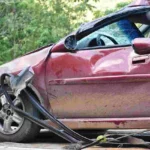
Car accidents are a common occurrence on California’s roads, and determining fault can be complex. In such cases, California’s pure comparative fault system comes into play, significantly impacting how settlements are determined. Understanding this system is crucial for anyone involved in a car accident in the state.
What is Pure Comparative Fault?
California follows a pure comparative fault system, which means that each party involved in an accident can be assigned a percentage of fault. Even if you were partially responsible for the accident, you can still recover damages, albeit reduced by your percentage of fault.
Impact on Settlements
- Determining Liability: Under the comparative fault system, fault is assigned on a percentage basis. For example, if you were found to be 20% at fault for the accident, your compensation would be reduced by 20%. This system allows for a fair and proportional allocation of responsibility among all parties involved.
- Negotiating Settlements: In car accident settlements, the comparative fault system plays a significant role in negotiations. Insurance companies will assess the evidence and arguments presented by both parties to determine each party’s degree of fault. Understanding your rights and having strong legal representation can help ensure you receive a fair settlement.
- Litigation Considerations: If a fair settlement cannot be reached through negotiations, the case may proceed to litigation. In court, a judge or jury will determine each party’s percentage of fault based on the evidence presented. This underscores the importance of thorough preparation and effective legal representation.
How It Works in Practice
Let’s consider an example: Suppose you were rear-ended by another driver while making a left turn, but it is determined that you did not use your turn signal. In this scenario, the other driver may be primarily at fault for failing to maintain a safe distance, but you may also be assigned a percentage of fault for not signaling your turn. As a result, any compensation you receive would be reduced by the percentage of fault attributed to you.
Seeking Legal Guidance
Navigating car accident settlements under California’s pure comparative fault system can be complex, especially if you’re dealing with injuries and property damage. Consulting with an experienced personal injury attorney is crucial. An attorney can assess the specifics of your case, negotiate with insurance companies, and advocate for your rights to ensure you receive fair compensation.
Conclusion
Understanding how California’s pure comparative fault system impacts car accident settlements is essential for anyone involved in a collision. By knowing your rights and seeking legal guidance, you can navigate the process more effectively and ensure you receive fair compensation for your injuries and damages. If you’ve been involved in a car accident, don’t hesitate to reach out to a qualified attorney for assistance.
- How Settlement Values Are Determined in California Personal Injury Cases - April 9, 2025
- How Can Evidence Be Preserved After a Personal Injury Accident - April 2, 2025
- How Do Emotional Distress Claims Work In Personal Injury Cases? - March 20, 2025